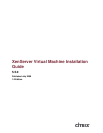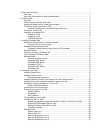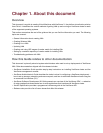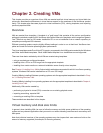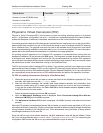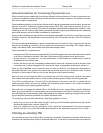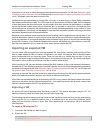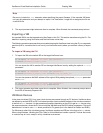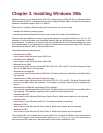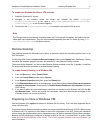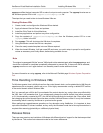Chapter 2. Creating VMs
This chapter provides an overview of how VMs are created and lists virtual memory and virtual disk size
minimums, describes the differences in virtual device support for the members of the XenServer product
family. This chapter also discusses physical to virtual conversion (P2V), cloning templates, and importing
previously-exported VMs.
Overview
VMs are created from templates. A template is a "gold image" that contains all the various configuration
settings to instantiate a specific VM. XenServer ships with a base set of templates, which range from generic
"raw" VMs that can boot an OS vendor installation CD or run an installation from a network repository to
complete pre-configured OS instances.
Different operating systems require slightly different settings in order to run at their best. XenServer tem-
plates are tuned to maximize operating system performance.
The Linux templates create Pure Virtual (PV) guests, as opposed to the HVM guests created by the Windows
and Other Install Media templates. Other Install Media template Linux installations are not supported.
There are three basic methods by which VMs are created using templates:
• using a complete pre-configured template.
• Installing from a CD or an ISO image onto the appropriate template.
• Installing from vendor media on a network installation server directly onto a template.
See Chapter 4, Installing Linux VMs to find out which methods are supported for which Linux flavor operating
systems. Windows VMs can be installed from a CD or an ISO image.
Creating VMs by installing Windows operating systems onto the appropriate templates is described in Chap-
ter 3, Installing Windows VMs.
Creating VMs by installing Linux operating systems onto the appropriate templates is described in Chapter 4,
Installing Linux VMs.
Additionally, VMs can be created by:
• performing a physical to virtual (P2V) conversion on an existing physical server.
• importing an existing, exported VM
• converting an existing VM to a template
These methods are described in this chapter.
Virtual memory and disk size limits
In general, when installing VMs, be sure to follow the memory and disk space guidelines of the operating
system and any relevant applications that you want to run when allocating resources such as memory and
disk space.
Note that individual versions of the operating systems may also impose their own maximum limits on the
amount of memory supported (for example, for licensing reasons).



